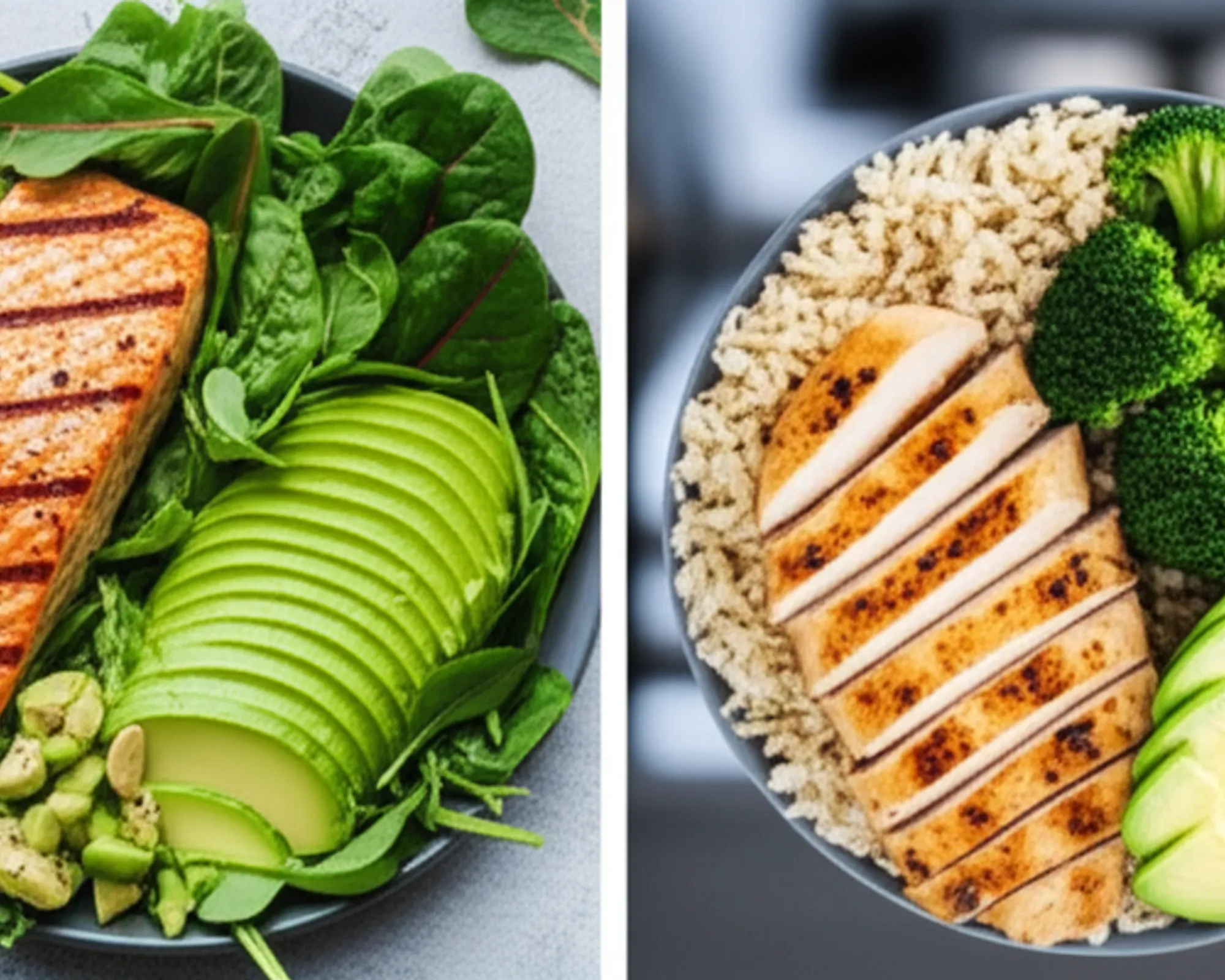Best Macro Ratio for Weight Loss in the Gym

Unlocking Your Weight Loss Potential: The Best Macro Ratio for Gym Goers
Embarking on a weight loss journey often brings us to the gym, ready to sweat it out and transform our bodies. While consistent workouts are undeniably crucial, true progress hinges equally on what happens in the kitchen. Specifically, understanding and optimizing your macronutrient (macro) ratio can be the game-changer you've been searching for. It's not just about eating less; it's about eating smarter, fueling your body for performance and fat loss.
What Are Macronutrients and Why Do They Matter?
Macronutrients are the three primary components of food that your body needs in large amounts for energy, growth, and repair: proteins, carbohydrates, and fats. Each plays a distinct, vital role, and their balance in your diet directly impacts your energy levels, satiety, muscle preservation, and ultimately, your ability to lose weight effectively.
- Proteins: The building blocks of muscle, enzymes, and hormones. Protein is crucial for repairing muscle tissue after workouts, promoting satiety (keeping you full), and has a higher thermic effect of food (TEF), meaning your body burns more calories digesting it.
- Carbohydrates: Your body's primary and most efficient source of energy. Carbs fuel your intense gym sessions, support brain function, and prevent your body from breaking down muscle for energy. They come in simple (sugars) and complex (starches, fiber) forms.
- Fats: Essential for hormone production, nutrient absorption (especially fat-soluble vitamins A, D, E, K), protecting organs, and providing a concentrated source of energy. Healthy fats also contribute to satiety.
The Core Principle: Caloric Deficit
Before diving into ratios, it’s vital to remember that weight loss fundamentally comes down to a caloric deficit – consistently consuming fewer calories than your body burns. No matter your macro ratio, if you’re eating too many calories, you won’t lose weight. However, the right macro ratio makes achieving and maintaining that deficit much easier and more effective, particularly when you’re actively training in the gym.
Optimizing Macros for Weight Loss and Gym Performance
1. Protein: Your Weight Loss Ally
For gym-goers aiming for weight loss, protein is paramount. A higher protein intake helps preserve lean muscle mass during a caloric deficit, which is critical because muscle burns more calories at rest than fat. It also keeps you feeling fuller for longer, reducing the likelihood of overeating. Aim for 0.7 to 1 gram of protein per pound of your target body weight.
2. Carbohydrates: Fuel for Your Workouts
Don't fall into the trap of cutting carbs too drastically, especially if you're hitting the gym hard. Carbs are essential for providing the energy needed for intense workouts, preventing fatigue, and aiding in recovery. Prioritize complex carbohydrates like whole grains, fruits, and vegetables for sustained energy and fiber. The amount of carbs you need will depend heavily on your activity level and the intensity of your training.
3. Fats: Essential for Hormonal Balance and Health
Healthy fats are crucial for overall health, hormone production (including testosterone, important for muscle building and metabolism), and vitamin absorption. While calorie-dense, healthy fats like those found in avocados, nuts, seeds, and olive oil contribute to satiety and play a key role in body function. Aim for 0.25 to 0.4 grams of fat per pound of your target body weight.
Common Macro Ratios for Weight Loss in the Gym
While individual needs vary, here are some commonly effective macro ratios for weight loss for active individuals:
- Moderate Carb, High Protein (e.g., 40% Carbs, 30% Protein, 30% Fat): This is a popular starting point for many. It provides enough carbs for energy, ample protein for muscle preservation, and sufficient fats for health. Good for those with moderate to high activity levels.
- Higher Protein, Moderate Carb (e.g., 30% Carbs, 40% Protein, 30% Fat): Emphasizes protein further for maximum satiety and muscle protection, while keeping carbs moderate. This can be particularly effective for individuals aiming to shed significant body fat while maintaining strength.
- Lower Carb, Higher Protein/Fat (e.g., 20-30% Carbs, 35-40% Protein, 35-40% Fat): This approach (often bordering on ketogenic principles) can be effective for some, especially those who struggle with carb cravings or have insulin sensitivity issues. It requires careful planning to ensure adequate energy for workouts and can be more restrictive.
Finding Your Personal Best Ratio: A Step-by-Step Guide
There's no one-size-fits-all, "best" macro ratio. Your ideal split depends on several factors:
- Determine Your Maintenance Calories: Use an online TDEE (Total Daily Energy Expenditure) calculator to estimate how many calories you burn daily.
- Create a Caloric Deficit: For weight loss, subtract 300-500 calories from your TDEE. This creates a sustainable deficit without being too drastic.
- Calculate Protein Needs: Multiply your target body weight (in pounds) by 0.8 to 1.0. This gives you your daily protein target in grams. (1 gram of protein = 4 calories)
- Calculate Fat Needs: Multiply your target body weight (in pounds) by 0.25 to 0.4. This gives you your daily fat target in grams. (1 gram of fat = 9 calories)
- Allocate Remaining Calories to Carbohydrates: Subtract the calories from protein and fat from your total daily calorie target. Divide the remaining calories by 4 (since 1 gram of carbohydrate = 4 calories) to get your daily carb target in grams.
Example: For someone aiming for 150 lbs target body weight and a 2000 calorie deficit goal:
- Protein: 150 lbs * 0.9g/lb = 135g Protein (135g * 4 cal/g = 540 calories)
- Fats: 150 lbs * 0.3g/lb = 45g Fat (45g * 9 cal/g = 405 calories)
- Remaining Calories for Carbs: 2000 - 540 - 405 = 1055 calories
- Carbohydrates: 1055 calories / 4 cal/g = 263.75g Carbs
This would give you a ratio of approximately 27% Protein, 20% Fat, 53% Carbs – a great option for active individuals who need ample carbs for energy.
Tracking, Adjusting, and Listening to Your Body
Once you have your target macro ratio, use a food tracking app for a few weeks to log your intake and ensure you're hitting your targets. Pay attention to how you feel: Are your energy levels good in the gym? Are you recovering well? Are you feeling satiated? If not, make small adjustments. Your body's needs can change as you progress, so be prepared to adapt your macros over time.
Focus on whole, unprocessed foods to meet your macro targets. Lean proteins (chicken, fish, eggs, tofu), complex carbohydrates (oats, brown rice, sweet potatoes, quinoa), and healthy fats (avocado, nuts, seeds, olive oil) will provide the micronutrients and fiber essential for health and sustainable weight loss.
Conclusion
The "best" macro ratio for weight loss in the gym isn't a fixed number but rather a personalized strategy that balances protein, carbohydrates, and fats to support muscle preservation, energy for workouts, and consistent fat loss within a caloric deficit. By understanding the role of each macronutrient, calculating your individual needs, and consistently tracking your intake, you'll empower yourself to not only achieve your weight loss goals but also build a stronger, healthier, and more resilient physique. Experiment, listen to your body, and enjoy the journey!


